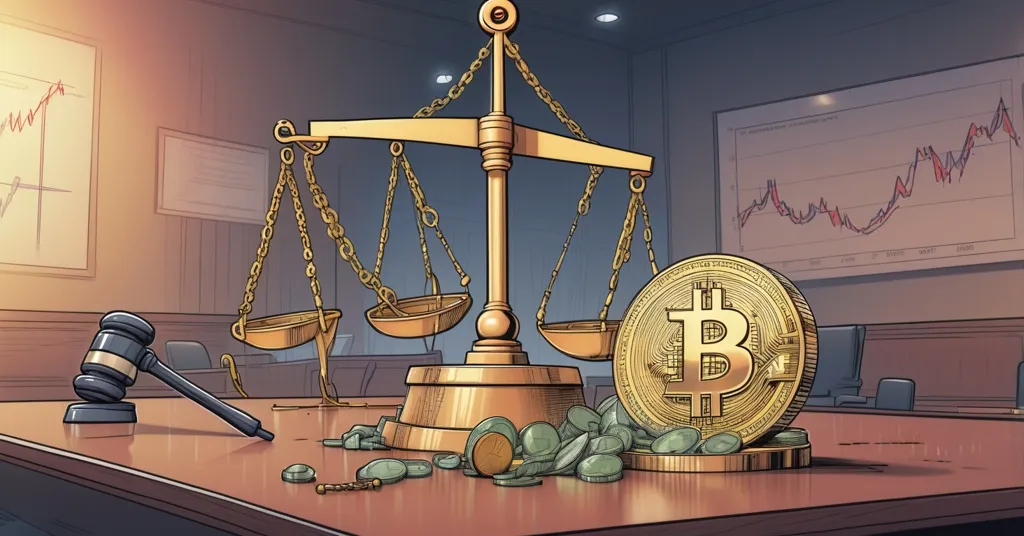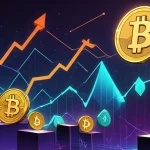Ripple SEC Victory and Powell Speech Fail to Lift XRP Price in 2025: What’s Holding It Back?

Ripple SEC Win and Powell Speech: Why XRP Price Stays Flat in 2025
Despite Ripple scoring legal victories in its ongoing battle with the SEC and Federal Reserve Chairman Jerome Powell’s recent Jackson Hole speech sparking rallies across Bitcoin and Ethereum, XRP’s price remains frustratingly stagnant. While the crypto market buzzes with macro-driven momentum, XRP seems immune to the hype—let’s unpack the perfect storm of legal outcomes, market mechanics, and investor sentiment keeping this token in limbo.
- XRP price stays range-bound despite Ripple’s legal progress and bullish macro events.
- Market anticipation, high liquidity, and a unique investor base dampen volatility.
- Weak ties to economic shifts set XRP apart from Bitcoin and Ethereum.
Legal Wins: Priced In or Played Out?
The Ripple vs. SEC lawsuit, a saga that kicked off in December 2020, has been a dark cloud over XRP for years. The core issue? Whether XRP qualifies as an unregistered security under U.S. law. Ripple has notched some wins—like a ruling that sales on exchanges don’t count as securities transactions—and the latest update on August 22, 2025, saw the Second Circuit approve a joint dismissal of appeals, signaling a potential end to major U.S. regulatory threats. According to a report on Ripple’s legal progress, this triggered a brief 10% spike in XRP’s price, jumping from under $2.8 to nearly $3.1. But before you pop the champagne, note that the surge fizzled fast, with XRP slipping back into its familiar range. Why? After years of speculation, every twist in this legal drama has been dissected and largely priced into the market. Investors have had ample time to adjust their positions, so even significant updates like this dismissal barely register as more than a blip. The market’s response feels like a bored shrug: “Yeah, saw that coming. What’s next?”
Yet, there’s a lingering shadow. While the dismissal might wrap up the core SEC fight, global regulatory scrutiny in markets like the EU or Asia could still pose challenges. XRP’s classification remains a hot potato in various jurisdictions, and until there’s broader clarity, institutional money might stay on the sidelines. Legal wins are a step forward, but they’re not the silver bullet for price action.
Market Mechanics: Why XRP Needs a Tsunami of Capital
Let’s talk numbers—XRP has a total supply of 100 billion tokens, with a massive chunk (42.5% as of late 2024, per Ripple’s reports) either held by Ripple Labs or locked in escrow. Each month, Ripple releases 1 billion XRP from escrow, sells a portion for operational costs, and often returns the rest to escrow, creating consistent supply pressure. This setup results in high liquidity and market depth, meaning there’s a ton of XRP available for trading. For deeper insights into XRP’s liquidity and market depth, community discussions highlight the challenges. For the average investor, this matters because it’s like trying to turn a cruise ship with a paddle—good luck moving the price without a tidal wave of cash. Unlike smaller altcoins that can skyrocket on a whim, XRP requires massive capital inflows to break out of its current price range. Technical indicators like the Chaikin Money Flow (CMF), which measures buying and selling pressure based on price and volume, have been flat since 2018, showing no sign of the huge inflows needed to push XRP to new heights.
Historically, this supply dynamic has kept downward pressure on XRP since escrow releases began in 2017. With billions still locked away, waiting to trickle into the market, the trend might persist unless demand surges dramatically. It’s a sobering reality check for anyone expecting quick pumps off legal headlines.
XRP Army: Patience Over Pump
Enter the “XRP Army,” a fiercely loyal community of holders who’ve weathered the storm of regulatory battles and market indifference. Unlike the speculative frenzy fueling many altcoins, these investors aren’t chasing short-term gains from a Fed speech or a courtroom win. Their focus is Ripple’s vision: XRP as a utility token for cross-border payments through RippleNet, a network designed for instant, low-cost transactions for banks and institutions. Think of it as a digital bridge for global remittances, not a memecoin lottery ticket. Exploring the impact of Ripple’s cross-border payment solutions sheds light on this vision. This long-term mindset means less knee-jerk reaction to news and more patience for real-world adoption. Social media platforms like Reddit show this dedication, with many in the XRP Army emphasizing partnerships and transaction volumes over daily price charts.
While admirable, this patience doesn’t exactly ignite fireworks in the market. RippleNet has processed billions in transactions across dozens of countries, yet this utility hasn’t translated into investor enthusiasm at the retail level. It’s a slow grind, and for now, the XRP Army’s faith in fundamentals over hype keeps volatility at bay.
Macro Disconnect: XRP as a Utility Outlier
Bitcoin and Ethereum often move like risk assets, swaying with macroeconomic winds such as interest rate expectations or Federal Reserve signals. Jerome Powell’s speech at the Jackson Hole Economic Symposium in 2025, where he hinted at potential rate cuts in September, was like catnip for BTC and ETH, sparking immediate rallies as investors piled into speculative plays. For a detailed analysis of Powell’s speech impact on crypto markets, the broader effects are clear. XRP, on the other hand, barely blinked. Why? It trades more like a utility token than a high-risk, high-reward asset. Its price shows weaker correlation to macro events, focusing instead on Ripple’s operational milestones or regulatory news. This detachment can feel like stability in a volatile market, but it’s also a recipe for a standstill when sentiment drives everything else.
Compare this to stablecoins or other payment-focused tokens like Stellar (XLM), and you see a pattern—utility-driven cryptos often lag behind speculative giants during macro-fueled bull runs. XRP’s target audience isn’t just retail traders; it’s banks and financial institutions, a crowd less swayed by Powell’s musings than by compliance and cost savings. Until macro shifts directly impact those sectors, XRP might keep playing by its own rules.
Technical View: Stuck in a Gridlock
For the chart enthusiasts among us, XRP’s price is treading water between key support and resistance points, often referred to as Fibonacci levels by traders. It’s failed to push past critical thresholds that could signal a major breakout, hovering in a predictable range. The monthly Relative Strength Index (RSI), a tool that gauges whether an asset is overbought or oversold, sits in overbought territory, hinting that XRP might need a cooldown before any sprint upward. While the token remains in a bullish long-term range with potential to challenge its all-time high of $3.40 (set in January 2018), lofty targets like $10 feel like pure fantasy without a drastic shift in market dynamics. For a broader perspective on why XRP’s price isn’t soaring despite legal wins, community discussions offer varied takes. And let’s be clear—those clickbait price predictions flooding XRP Twitter are mostly shilling nonsense. We’re not here to peddle hopium; the charts tell a story of consolidation, not moonshots. A push to $4 or $5 isn’t out of reach if adoption grows, but it’s far from guaranteed.
Adding to the mix, CryptoPotato notes that sustaining a price above $3.1 could trigger liquidations for over-leveraged short traders—folks betting against XRP. This might inject some short-term volatility, but it’s no promise of a lasting trend. Volume trends and other indicators still point to a market waiting for a bigger catalyst.
Centralization Concerns: A Fly in the Ointment
Not everyone’s waving the XRP flag with unbridled optimism. Dig into community discussions on platforms like Reddit about XRP price stagnation, and you’ll find sharp skepticism about Ripple’s control over such a huge slice of the supply—42.5% either held directly or in escrow. One user put it bluntly, calling XRP holders potential “exit liquidity” for Ripple, suggesting that trust in the company overshadows trust in transparent, decentralized code. With only 4.5 billion XRP in active wallets compared to 38 billion in escrow, the fear of manipulation looms large. It’s a brutal counterpoint to the XRP Army’s long-game outlook and raises a flag for those of us championing decentralization as the heart of crypto’s revolution. While XRP’s utility for cross-border payments aligns with disrupting outdated financial systems, Ripple’s tight grip on supply could be a dealbreaker for institutional investors wary of centralized risks.
Compare this to Bitcoin, where decentralized mining and distribution fuel its strength as a store of value, and you see why XRP struggles to shake the “corporate coin” label. Until Ripple addresses these concerns—perhaps through changes in escrow policy or broader token distribution—some market participants might keep their distance, capping price upside no matter the legal wins.
What Could Break the Standstill?
So, what’s it going to take for XRP to snap out of this funk? A few catalysts could shift the narrative. Major bank adoption or a blockbuster partnership expanding RippleNet’s reach—say, processing trillions in transactions annually—might finally bridge the gap between utility and price. Rumors of a Ripple IPO, if they materialize, could also draw fresh eyes and capital, though it risks further centralization concerns. On the supply side, a change in escrow release mechanics, like slowing or halting monthly dumps, could ease downward pressure. For background on Ripple Labs and the SEC lawsuit details, a comprehensive overview helps clarify the stakes. And let’s not forget the wildcard: a broader crypto bull run, fueled by macro tailwinds or Bitcoin halving cycles, might drag XRP along for the ride, even if it’s a reluctant passenger.
Globally, favorable regulatory rulings outside the U.S. could open new markets for XRP, countering the SEC’s long shadow. But these are hypotheticals—right now, the token remains caught between a rock (centralized supply risks) and a hard place (a market obsessed with hype over fundamentals).
Key Takeaways and Questions for Reflection
- Why isn’t XRP’s price surging with Ripple’s legal wins or Powell’s speech?
Most outcomes of the SEC case are already priced in after years of anticipation, high liquidity demands huge capital to move the price, and XRP shows weak correlation with macro events unlike Bitcoin and Ethereum. - How does investor sentiment affect XRP’s market behavior?
The “XRP Army” prioritizes long-term adoption and institutional use over short-term news, fostering stability but limiting reactive price spikes to legal or economic catalysts. - Is reaching $10 a realistic goal for XRP in the near term?
While XRP holds a bullish long-term range with potential to test its all-time high, hitting $10 seems unlikely without massive liquidity inflows or a shift in market sentiment, given current consolidation and overbought signals. - Why does XRP respond differently to macro events compared to Bitcoin and Ethereum?
XRP behaves more like a utility token aimed at institutional use, showing muted reactions to Fed policies or economic signals that drive BTC and ETH as speculative risk assets. - Are centralization risks holding XRP back?
Yes, Ripple’s control over 42.5% of XRP supply raises manipulation fears, potentially deterring institutional investors and dampening price growth despite positive developments.
XRP sits at a curious crossroads—legal hurdles are clearing, utility is growing, yet the price chart looks like a flatline in a bull market EKG. Is this slow grind a sign of maturity, a token prioritizing substance over flash in a hype-driven space? Or is it a warning that utility alone can’t compete with sentiment and decentralization ethos? For Bitcoin maximalists, XRP’s centralized baggage is a glaring flaw compared to BTC’s trustless design. Yet, there’s a niche here—disrupting sluggish financial systems with fast, cheap transactions—that Bitcoin doesn’t fill. For now, XRP holders might need to keep the faith, betting that the market eventually wakes up to their vision. Whether that day comes before the next crypto winter, well, that’s the million-dollar question—or maybe just the $3.40 one, if we’re keeping expectations grounded. For the latest on Ripple’s legal wins and XRP price stagnation alongside Powell’s influence, or a deeper dive into XRP market dynamics and SEC updates, the conversation continues.



